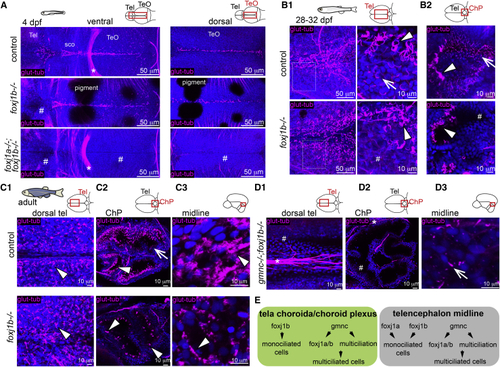Fig. 5
|
(A) Lack of cilia in the dorsal telencephalon in (B1 and B2) MCCs (arrowhead) are not affected in the (C1–C3) MCCs are not affected in the adult medial TC (C1; n = 3), ChP (C2; n = 4), and midline of the telencephalon/diencephalon (C3; n = 3). (C2) Monociliated cells are particularly affected in the ChP. (D1–D3) Loss of cilia in the medial TC (D1) and ChP (D2) of adult (E) Diverse genetic programs instruct the formation of ciliated cells in the TC/ChP and in the telencephalon midline. TeO, optic tectum; sco, sub-commissural organ. Arrows indicate monociliated cells, arrowheads indicate MCCs, and asterisks indicate axon tracts. Cilia loss is indicated by hashtag symbols. See also |
| Fish: | |
|---|---|
| Observed In: | |
| Stage Range: | Day 4 to Adult |

